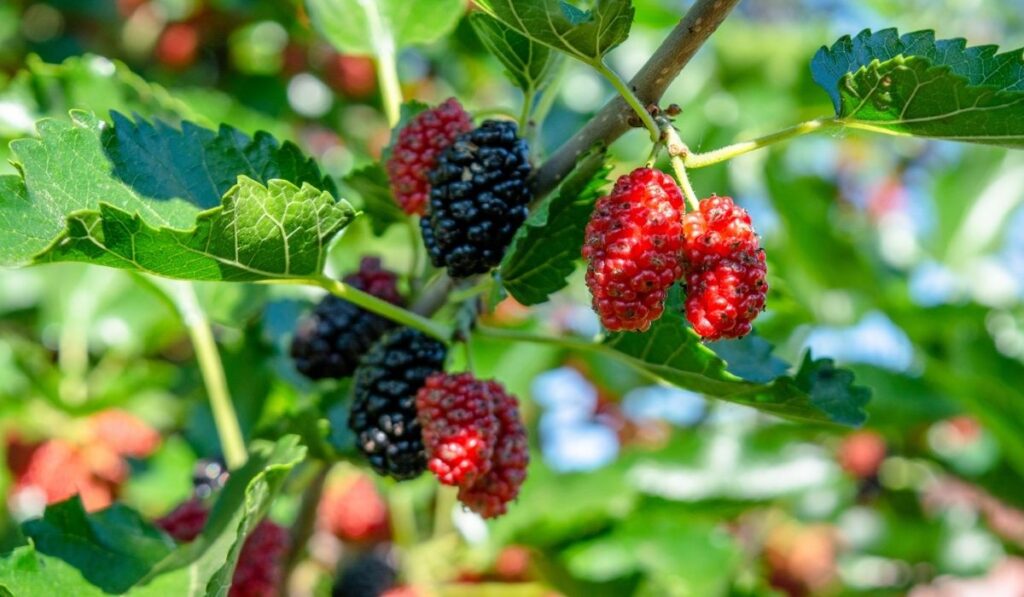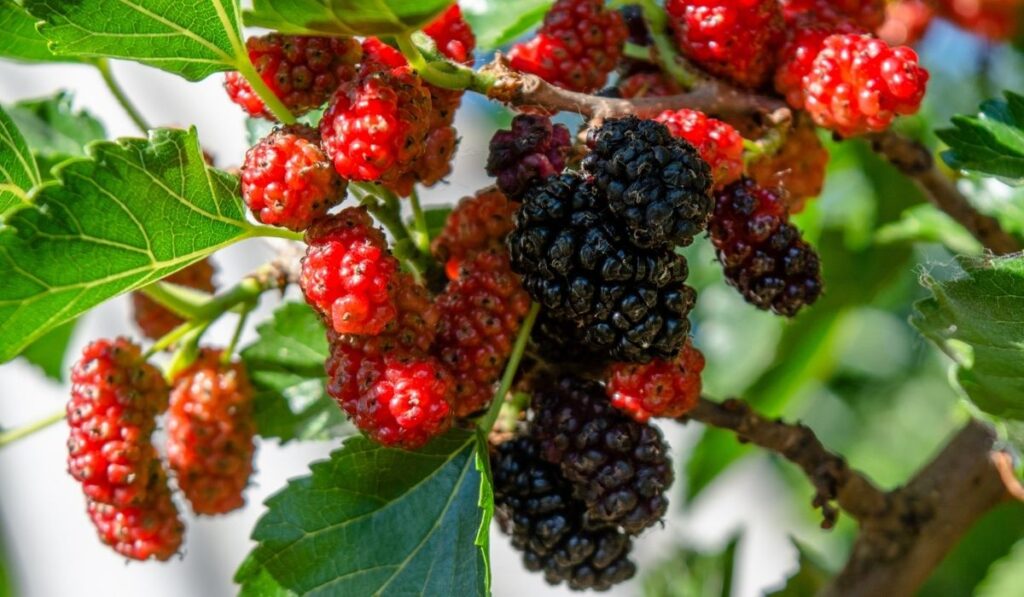Mulberries thrive in hot weather and don’t need much water to survive. This makes them a popular choice for growers in dry regions. Mulberries can be eaten fresh off the tree, but are also a popular ingredient in pies, jams, and other desserts. Mulberries have a sweet taste with a hint of tartness that makes them a refreshing and versatile fruit.
Mulberries are in season from late spring through early summer, though the exact timing depends on the variety. The white mulberry, for example is one of the earliest to ripen, while the black mulberry comes in at the end of the season.
If you’re already craving a handful of mulberries, we don’t blame you. But before you head out to the market, let’s take a closer look at when mulberries are in season, where to buy them, and how they can be used.
What Are Mulberries?

Mulberries are a type of fruit that grows on a tree of the same name. The mulberry tree is fast-growing and can reach up to 20 feet tall. Mulberries are relatively easy to grow and care for, making them popular for home gardens.
The mulberry tree is native to warm climates in Africa, Asia, and in the Mediterranean region. However, it can also be found in some cooler regions like North America and Europe. Today, mulberries are grown commercially for their fruit, which is used in pies, jams, wines, and other desserts. Mulberries come in various colors, including white, red, and black.
The white mulberry is the most common type grown commercially. It has a sweet taste with a hint of tartness. The red and black mulberries are less common but have a sweeter flavor.
Mulberries are a good source of vitamins C and K, as well as fiber. They also contain anthocyanins, which are powerful antioxidants.
When Are Mulberries in Season?
Mulberries are unique in that they don’t fully mature all at once, as other types of berry trees do. The first to flower are white mulberries, which produce tiny white flower buds, giving them their name. The fruit is sweet but bland, and it isn’t considered as delicious as that of red and black mulberries.
They ripen from late spring to early summer. Red mulberries ripen alongside white mulberries, but their season extends to mid-summer. Black mulberries are the last to flower and have the longest season, from mid-summer to late summer.
When in season, the red mulberry produces a deep red fruit that tastes like a cross between a raspberry and blackberry. The highly sought-after black mulberry fruit has a deep purple color with a sweetness that rivals any other berry.
Where Can I Find Mulberries?
If you’re lucky enough to have a mulberry tree in your yard, then you don’t need to look any further for fresh mulberries. However, if you don’t have a tree of your own, you can purchase fresh mulberries from farmer’s markets or specialty grocery stores. You can also find dried mulberries in some health food stores.
Fresh mulberries should be stored in the fridge and used within a few days. They can also be frozen for longer storage. Dried mulberries can be stored at room temperature in an airtight container for up to six months.
Mulberries shouldn’t be washed until you’re ready to eat them, as washing can cause them to spoil more quickly. And in the off season, shelf-stable options like dried mulberries (on Amazon) are still available.
How Do You Eat Mulberries?
Mulberries are a delicious and versatile fruit that can be enjoyed in many different ways. Fresh mulberries can be enjoyed as is or used in various recipes such as pies, cobblers, jams, and wines.
Dried mulberries make a great addition to cereal, yogurt, oatmeal, and baked goods. They can also be rehydrated and used in the same way as fresh mulberries.
Mulberries can also be cooked down into a sauce or syrup and used as a topping for ice cream or pancakes. When cooking with mulberries, be aware that they can stain surfaces and clothing, so it’s best to use them in recipes where their color won’t be an issue.
Whether you enjoy them fresh, dried, or cooked, make sure to take advantage of their short season by incorporating them into your favorite recipes.
What Are the Health Benefits of Mulberries?

As we mentioned above, mulberries are a good source of vitamins C and K, as well as fiber. They also contain anthocyanins, which are powerful antioxidants. Anthocyanins have been shown to help protect cells from damage, reduce inflammation, and boost brain health.
They may also help to lower the risk of heart disease and cancer. Mulberries are also a good source of iron, which is important for maintaining energy levels, preventing anemia, and supporting a healthy immune system.
In addition to their nutritional benefits, mulberries have also been used in traditional medicine for centuries. They have been used to treat various conditions such as diarrhea, constipation, and indigestion.
Mulberry syrup has also been used to help treat sore throats. More research is needed to confirm the efficacy of these uses, but mulberries are generally considered safe for most people when consumed in moderation, so it can’t hurt to try!
